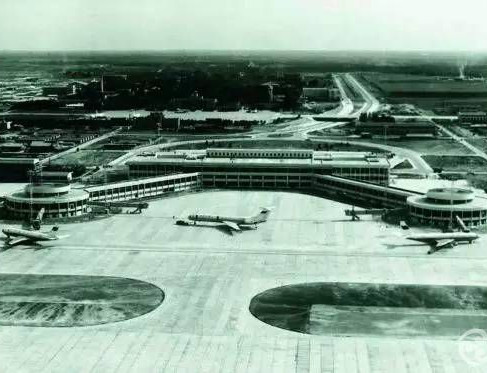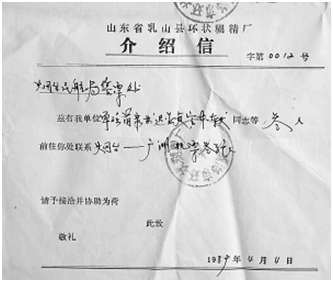Up in the sky: how did air travel develop in China
- Gustavo Fiorello
- Jan 19, 2022
- 4 min read
Updated: Mar 22, 2022
With the COVID-19 outbreak, China’s civil aviation was the first to feel the blow. Since then, canceled flights, quarantines, and never-ending tests to prove one is not infected have become standard routine for common passengers. To understand the significance of this impact, it is necessary to see how Chinese aviation became so important to the country (and the world).
Before the take-off
Beijing International Airport, 1980s. Source: Air66.cn
Chinese aerial space since 1949 was under the monopoly of the Civil Aviation Administration of China (CAAC), founded right after the Party’s rise to power. Despite being “civil” in name, it informally acted as a branch of the People’s Liberation Army Air Force (PLAAF). The agency was responsible for “the control of the national airlines, the management of commercial air traffic and the administration of airports.”1
To ride an airplane was a luxury reserved only to high-rank government officials. So in consonance with the centralized economic planning of the period, the industry was subsidized by the Chinese government and served political and military interests.2
Stabilizing the flights
Like all other branches of Chinese industry, the situation started to change only after the Reform and Opening-Up Policies. One of the first measures taken by Deng Xiaoping’s government was to separate the CAAC from the military. Next, in 1987, was the creation of six major state-owned airline companies based on regional bureaus: Air China (Beijing), China Eastern (Shanghai), China Northwest (Xi’an), China Northern (Shenyang), China Southwest (Chengdu), and China Southern (Guangzhou).3
Alongside the monopoly break, the central government also stimulated local authorities to create inter-provincial, domestic airlines. However, limitations such as proper airport infrastructure,4 outdated airplanes, lack of trained pilots, and safety supervision led to an increase in accidents in the 80s and the 90s.5
From the passengers’ point of view, the opening did not exactly bring facility. Despite the break in exclusivity for government officials, the ticket price was higher than the average monthly salary at the time.6 Demand and bureaucracy were also in the way. Buyers had to bring a reference letter from their employer, which could take at least two weeks to be issued. And given the few flight agencies available at the time, one would have to wait for hours in line to purchase a ticket7.
Left: Introduction letter from the 1980s to buy a passage. Source: Zhihu.
Right: An airplane ticket from the 1980s. Source: Zhihu.
Soaring high
With the continued liberalization of air travel, the industry grew exponentially during the 90s and 2000s. After the first local airlines had been established, China aimed to expand its international routes. In 1996, the country was registered in the International Civil Aviation Organization (ICAO) and opened its borders to more international flights. In 2002, the Chinese government promoted the rise of the biggest three companies at the time—Air China, China Eastern, and China Southern—which came to dominate domestic and international flights.8
In the same year, the country’s entrance to the World Trade Organization (WTO) further increased the demand for air travel, which “largely dissolved the existing barriers to international trade and travel between China and Western countries” and opened the doors to competition with foreign flight companies.9
The number of passengers also gradually increased during the period. The requirement of reference letters to buy tickets was finally abolished in 1993, and all a Chinese citizen needed from now on was their own ID. But despite that, tickets were still expensive for most of the population: “At this point, air travel was no longer a privilege but still held some prestige, albeit less than it did in the 80s.”10
Another changing factor on the profile of passengers was their new reasons for traveling. If before it was a privilege of authorities, and later businessmen and the wealthy, the emerging middle-class increased the demand for international flights for leisure. United States, Europe, Japan, South Korea, and Southeast Asia became top destinations in the 2010s for a new generation of Chinese tourists.11
Covid-19, restrictions and new challenges
What once was a prosperous and wealthy industry saw with COVID-19 a true watershed.
With the epidemic still on the run, the Chinese government has maintained restrictions on domestic and international flights, discouraging its citizens from traveling on holidays.12 Meanwhile, with the borders still largely restricted for foreigners, the world anxiously awaits when China will fully reopen. Many cities, once dependent on the continuous income of Chinese tourists, saw huge losses in their service industry.

Weibo's page of France's National Tourism Development Agency (in Chinese, fàguó lǚyóu fāzhǎn shǔ 法国旅游发展署), with over one and half million followers.
Because of that, a silent battle for attention has started for when they finally come back. In France, for example, agencies started using Chinese social media to promote touristic spots and French culture to ensure their country will be first on the list once air travel between China and the world returns to normal.
As Catherine Oden, who works for a government institute responsible for touristic promotion clearly states: “We want to be present in their minds… [s]o that once everything gets back to normal, they choose France as their first destination.”13
"Untill we meet again": One of the promotional videos of France's National Tourism Development Agency, posted on their official BiliBili page.
References / To go further
Alan Williams, Contemporary Issues Shaping China’s Aviation Policy: Balancing International with Domestic Priorities (Ashgate, 2009), 20-21.
Yahua Zhang and David K. Round, “China’s airline deregulation since 1997 and the driving forces behind the 2002 airline consolidations,” Journal of Air Transport Management, no. 14 (2008), 130-131.
Zhang and Round, “China’s airline deregulation,” 131.
Cedric Zhang, “A brief history of air travel in China since the 1980s,” Daxue Consulting, September 6, 2021, https://daxueconsulting.com/air-travel-china/.
Williams, Contemporary Issues, 200.
Zhang, “A brief history.”
王婵, “买过这些机票你就暴露自己的年龄啦,” CAN News, August 18, 2015, http://www.cannews.com.cn/2015/0818/131820.shtml.
Yahua Zhang and Zhen Lu, “Low Cost Carriers in China and its Contribution to Passenger Traffic Flow,” Journal of China Tourism Research, no. 9 (2013), 209.
Jiaoe Wang, Haoran Yang, and Han Wang, “The Evolution of China’s International Aviation Markets from a Policy Perspective on Air Passenger Flows,” Sustainability, no. 11 (2019), 4-5.
Zhang, “A brief history.”
Wang, Yang, and Wang, “The Evolution.”, 9-13.
Will Davies and Claire Che, “China Advises Against Overseas Travel During National Holidays,” Bloomberg, September 14, 2021, https://www.bloomberg.com/news/articles/2021-09-14/china-advises-against-overseas-travel-during-national-holidays.
Sui-Lee Wee, Elisabetta Povoledo, Muktita Suhartono, and Léontine Gallois, “When the Biggest Spenders Aren’t Coming Back Any Time Soon,” New York Times, December 5, 2021, https://www.nytimes.com/2021/12/05/world/asia/china-tourism-omicron-covid.html.














댓글